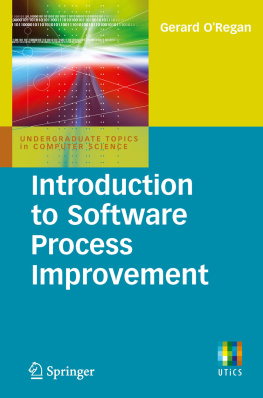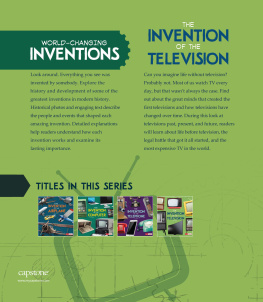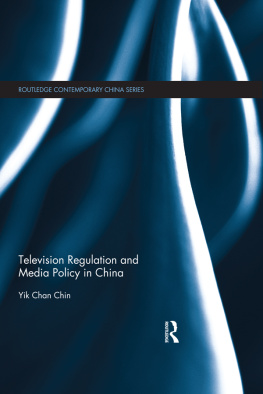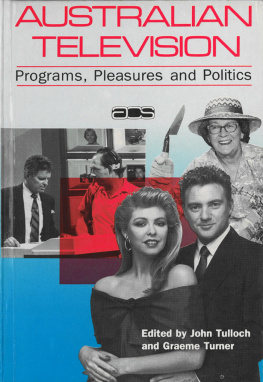Abbreviations
ABA Australian Broadcasting Authority (the ABTs successor)
ABC (US) American Broadcasting Company
ABC Australian Broadcasting Corporation
ABCB Australian Broadcasting Control Board (the ABTs predecessor)
ABT Australian Broadcasting Tribunal
AFC Australian Film Commission
AFL Australian Football League
AFTRS Australian Film, Television and Radio School
AGPS Australian Government Publishing Service
ALP Australian Labor Party
ATSIC Aboriginal and Torres Strait Islander Commission
AUSSAT company operating domestic satellite, now Optus
BAPH Brisbane, Adelaide, Perth and Hobart
BBC British Broadcasting Commission
BRACS Broadcasting in Remote Aboriginal Communities Scheme
CAAMA Central Australian Aboriginal Media Association
CBS Columbia Broadcasting System (US)
CLC Communications Law Centre, Sydney
DAA Department of Aboriginal Affairs
DOTAC Department of Transport and Communications
EBR Entertainment Business Review
ESB English-speaking background
FACTS Federation of Australian Commercial Television Stations
FCC Federal Communications Commission (US)
FFC Film Finance Corporation
GATT General Agreement on Tariffs and Trade
ITV Independent Television (Britain)
NBC National Broadcasting Company (US)
NESB non-English-speaking background
NIMAA National Indigenous Media Association of Australia
RCTS Remote Commercial Television Service
RTA Regional Television Australia
SBS Special Broadcasting Service
SBS-TV Special Broadcasting Service Television Network
SMBA Sydney, Melbourne, Brisbane, and Adelaide
TAIMA Townsville Aboriginal and Islander Media Association
TPC Trade Practices Commission
UHF ultra high frequency
UTS University of Technology, Sydney
VCR video cassette recorder
VFL Victorian Football League
VHF very high frequency
Notes
Australian dollars used throughout, unless otherwise indicated. One billion = 1000 million
Acknowledgements
I owe a large debt to co-authors, Dona Kolar-Panov (on SBS-TV) and Philip Batty (on Aboriginal television). Dona and Philip expanded my horizons and gave this book a depth it would not have had otherwise.
Many other people contributed to the shape of this book. My interest in Australian television had its beginnings as a graduate student at Griffith University in the late 1970s and was shaped by my teachers and friends at Griffith and elsewhere at that time, particularly Albert Moran, Sylvia Lawson, Stuart Cunningham, Mick Counihan, Paul Willemen and Meaghan Morris. Stuart Cunningham urged me to collect my essays on television into a book, worked on publishers on my behalf, and then read the manuscript. Especial thanks in the preparation of this manuscript go to Toby Miller who read drafts of each chapter a number of times and provided detailed critical advice. Rita Shanahan and John Hartley also read and commented on it all. A number of people gave me useful comments on different parts of the book: Jock Given, Cathy Robinson, Jonathan Levy, Steve Mickler, Mudrooroo, Ien Ang, Allan Brown, Peter Morris, Peter White, Humphrey McQueen, Peter Cook, Henry Mayer, Graham Shirley, David Watson and Denise Corrigan. Others helped more indirectly: Michael Leigh, Penny Taylor, Tim Rowse, David Noakes, John Darling and Mitzi Goldman.
A Murdoch University Special Research grant and Outside Studies Leave enabled me to finish the book. I am grateful to the university for this support. Throughout this project I have been assisted by some wonderful librarians at Murdoch University and the Film & Television Institute (WA) who helped overcome the tyranny of distance. I also owe a special debt to my colleagues in the Communication Studies Program at Murdoch University and especially the Program Chair Irma Whitford and the Deputy Chair Alec McHoul who both encouraged and helped me to get on with it. Finally, thank you to Elizabeth Weiss of Allen & Unwin and to series editor John Tulloch, for their support of this book.
This book is dedicated to Rita whose support I always had, despite the burden it placed on her at a time when we had just had twins.
The third part of Australias Television Culture appeared as Inventing Australian Television in TV Times, eds D Watson and D Corrigan, Museum of Contemporary Art, Sydney. It is published with permission of the Museum of Contemporary Art.
Two longer versions of High Communications Policy in Australia appeared as Towards a High Communication Policy in Continuum 2, 1 (1988/89); and in Media Information Australia 58 (November 1990). The shortened and revised version contained here is published by permission of Continuum and Media Information Australia.
An earlier version of The Rise and Fall of Entrepreneurial Television, 19861992 appeared originally in Screen 32, 1 (1991) and is published by permission of the editors of Screen and its publisher, Oxford University Press.
An earlier version of Televisions Double Face: Of Imported and Local Programming appears in Film Policy: An Australian Reader, Institute for Cultural Policy Studies, Griffith University, 1993. It is republished here by permission of Albert Moran.
For copyright clearances for the use of particular quotations I would like to thank: the Museum of Contemporary Art (Sydney) and Anna Maria dellOso for permission to republish an extract from her article White Mans Dreaming published in TV Times, eds D Watson and D Corrigan, Museum of Contemporary Art, Sydney, pp 1822; Entertainment Business Review for permission to quote extensively from its article Focus on the Television Industry: How Seven, Nine and Ten are Coping with the Industrys Transition to Maturity which appeared in Entertainment Business Review, 4 November 1991: and finally thanks to Variety for permission to reprint figures on global television prices from Variety April 1991, copyright 1991 by Cahners Publishing Co.
Bibliography
Appleton, Gillian 1988, How Australia sees itself: The role of commercial television, in The Price of Being Australian, Australian Broadcasting Tribunal, Sydney, pp. 190246
Arena, Franca 1985, The ethnic media: Issues and problems: A consumers point of view, in Immigration and ethnicity in the 1980s, eds IH Burnley, S Encel and Grant McCall, Longman Cheshire, Melbourne, pp. 959
Armstrong, Mark 1974, Obstacles to sensible broadcasting regulation, The Australian Quarterly vol 46, no 4, pp. 721
1988, Introduction, Australian Communications Technology and Policy, eds E More and G Lewis, AFTRS & Centre for Information Studies, Kuring-gai CAE, Sydney, pp. 312
Ashbolt, Allan 1985, Radio and television services for migrants: Problems and prospects, in Immigration and ethnicity in the 1980s, eds IH Burnley, et al, Melbourne; Longman Cheshire, pp. 10410
ATSIC (Aboriginal and Torres Strait Islander Commission) and Department of Transport and Communication (DOTAC) 1991, Aboriginal and Torres Strait Islander broadcasting policy review, a discussion paper prepared jointly by the Aboriginal and Torres Strait Islander Commissions and the Department of Transport and Communications, July 1991, ATSIC and DOTAC, Canberra
Australian Broadcasting Tribunal (ABT) 1984, Satellite Program Services vol 1, Canberra, AGPS
1985, Remote Commercial Television Services Fourth Report Central Region, AGPS, Canberra
1988, Broadcasting in Australia, AGPS, Canberra
1990, Broadcasting Financial Yearbook 1988/89, ABT, Sydney
1991a, Arts programs on Australian television,







